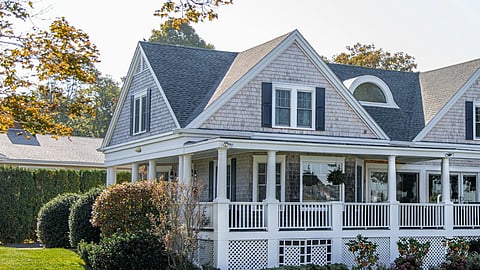Creating a Cozy Home: Why Your Furnace and Water Heater Are the Heart of Winter Comfort
Nothing tests a home like the first deep freeze of January. Open the door after a blustery commute and you expect two reassuring sensations: warm air streaming from the registers and piping-hot water ready for tea, showers, and laundry. Those comforts come from a tandem working harder than every other appliance combined—the furnace and the water heater. In a typical U S residence, heating alone swallows about 29 % of the annual utility budget, more than any other system in the house. North of the border the story is similar: space heating (62 %) and water heating (19 %) together eat up over four-fifths of household energy use. Because these two machines dictate both comfort and cost, understanding how they function—and how to keep them efficient—pays off in warmth, savings, and peace of mind.
Upgrade Roadmap: Knowing When and How to Replace
Deciding between repair and replacement often comes down to a simple equation: multiply the quoted repair cost by the unit’s age; if that figure exceeds half the price of a new high-efficiency model, it is usually time to swap. Furnaces older than 15 years and tanks approaching a decade rarely justify major fixes because corrosion and efficiency losses accelerate with age. Professional installation matters just as much as equipment choice—poor duct sealing or improper vent slope can erase rated gains. Turnkey services such as water heater installation bundle load calculations, code-compliant venting, permits, and workmanship guarantees into one predictable payment plan, letting homeowners upgrade before an emergency strikes.
Heating Loads: Why Furnaces and Water Heaters Dominate the Bill
Winter energy math is merciless. A furnace must raise every cubic metre of indoor air from near-freezing to a cozy 20 °C and keep it there despite constant heat loss through walls, windows, and roof. Meanwhile the water heater maintains a 150- to 230-litre tank (or meets on-demand draws) at roughly 49 °C, overcoming frigid incoming mains. Because both tasks fight physics around the clock, even small inefficiencies multiply. A clogged furnace filter forces the blower to run longer; five millimetres of lime scale inside a water-heater tank acts like a thermal blanket, lengthening burn cycles. Add the fact that cold air is denser and carries more moisture, and your duct fan, burner, and heat exchanger all work overtime exactly when gas prices spike.
Efficiency Evolution: Condensing Furnaces & Next-Gen Water Heaters
Older mid-efficiency furnaces convert barely 65 % of fuel into heat, venting the rest as hot exhaust. Modern condensing units cool that exhaust below the dew point, reclaiming latent heat and pushing ratings to 95–98 % Annual Fuel Utilization Efficiency (AFUE). Similar leaps have transformed water heating. Heat-pump water heaters (HPWHs) pull ambient heat from the air and can deliver up to four units of heat for every unit of electricity consumed. Gas households can look to condensing tankless models that fire only when a tap opens, eliminating standby losses. Together, these upgrades can shave hundreds of dollars each winter, shorten recovery times between showers, and cut carbon footprints without sacrificing comfort.
Sizing and Maintenance: Hidden Keys to Steady Comfort
Bigger is not better. An oversized furnace short-cycles—blasting heat in short bursts, then shutting down before reaching steady-state efficiency, leaving temperature swings and higher wear on components. A proper Manual J (or CSA-F280 in Canada) heat-loss calculation accounts for insulation, window area, and local design temperatures to pinpoint the right capacity. Water heaters follow the same logic; choose one sized for the home’s “first-hour rating,” not the biggest tank on the shelf. Once installed, diligent upkeep preserves efficiency: replace furnace filters every 60–90 days, vacuum supply and return grilles, flush a few litres from the water-heater drain valve each quarter, and inspect the sacrificial anode rod annually. A $15 filter or anode can prevent a $300 mid-season service call.
Smart Controls & System Integration
Digital brains are making legacy hardware smarter. Wi-Fi thermostats learn household schedules, pre-heat rooms before wake-up, and allow temperatures to drift lower while occupants are away—saving up to 10 % without noticeable discomfort. Utility demand-response programs even pay homeowners to let cloud algorithms nudge the set-point a degree or two during peak grid stress. On the hot-water side, recirculation pumps with motion or timer controls eliminate the “cold-pipe wait” at far-flung taps while running only when needed. Some HPWHs now connect to home-energy-management systems, scheduling heat cycles for utility off-peak windows. The result is seamless comfort plus measurable cuts in kilowatt-hours and cubic metres of gas.
Conclusion
A cozy winter home is not an accident; it is the product of well-chosen, well-maintained hardware working in quiet harmony. The furnace and water heater may lurk in the basement, but they rule the household’s comfort, carbon footprint, and cash flow. Treat them as the heart of your winter resilience: size them thoughtfully, maintain them faithfully, and embrace smart controls that stretch every kilojoule. Do that, and each time you step inside from the cold you will feel not just warmer air, but the welcome calm of a home prepared for whatever winter throws its way.
Inspired by what you read?
Get more stories like this—plus exclusive guides and resident recommendations—delivered to your inbox. Subscribe to our exclusive newsletter
Resident may include affiliate links or sponsored content in our features. These partnerships support our publication and allow us to continue sharing stories and recommendations with our readers.

